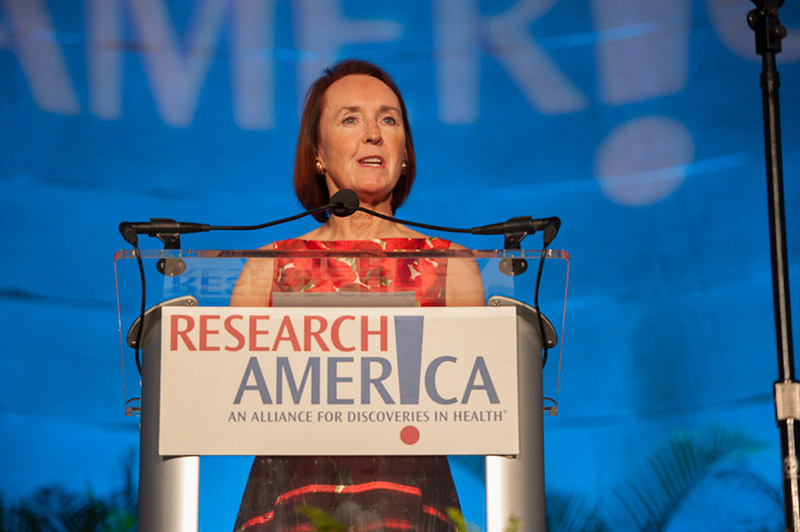It’s time to dig deeper

Dear Research Advocate:
I have given several talks recently on the role each of us has in winning hearts and minds for research, stressing the importance of telling stories and connecting emotionally rather than clobbering people with facts. That said, sometimes facts tell stories, and sometimes neither stories nor facts compel desperately needed change. Such is the case with gun violence. It’s time to dig deeper.
On an average Sunday in this country, about 100 people are killed by firearms, two-thirds of them by suicide. Three days ago, 58 people who had gathered to watch music were senselessly gunned down by a single shooter. Our nation mourns this and every gun violence tragedy, but we do not unify around actions to prevent more. For insight that is useful regardless of the issue, I commend this op-ed by political science Professor Hahrie Han, who studies grassroots organizations. Han combines her science with personal storytelling to point us toward meaningful grassroots advocacy.
Science has another important role to play here. There is too much about gun violence that we don’t understand, and some things we understand but fail to apply (an interesting parallel to the delivery of evidence-based health care…a topic for another time). Since the mid-1990’s, annual appropriations bills have included language that creates uncertainty about the federal government’s authority to conduct or support gun violence research. As a result, CDC hasn’t pursued this area of research since 1996. NIH continues to accept proposals for gun violence research, although it suspended its focused program on this research. If you believe gun violence research is important, make the case for it to your elected representatives and/or in an op-ed or LTE.
The first week of October brings the announcement of Nobel Prizes. NIH and NSF funded researchers are well represented this year for their contributions to expanding knowledge that has demonstrably driven significant health advances and has literally expanded our view of the universe. We congratulate all the laureates; I invite you to read our statements for more. What terrific examples of the role taxpayer-supported research plays in fueling medical and societal progress!
Last week, I asked you to write your Senators encouraging them to sign on to a letter opposing language in the National Defense Authorization Act (NDAA) that jeopardizes the Congressionally Directed Medical Research Program (CDMRP). We are making progress — Representatives Ryan Costello (R-PA), Dave Loebsack (D-IA), Peter King (R-NY), and Sanford Bishop (D-GA) are circulating a similar letter in the House. Let’s keep the momentum going: please take a minute to send a message urging your Representative to sign on!
Mark your calendar for our next Research!America alliance member meeting/call, which will take place from 2:00-3:00 PM ET on Friday, October 27. Budget expert Maya MacGuineas, President of the Committee for a Responsible Budget, will help us navigate the current budget and tax landscape. We also plan to discuss the periodic debate surrounding the proper use of the “march-in” provisions of the Bayh-Dole Act, particularly the implications for industry and university technology transfer programs.
An insightful WebMD interview with Executive Vice President of the American Association of Colleges of Pharmacy and Research!America Board Member, Dr. Lucinda Maine highlights the powerful role the pharmacist can play in stemming the opioid crisis as well as the importance of not defining the challenge too narrowly. In today’s Senate Health, Education, Labor, Pensions (HELP) Committee hearing on the federal response to opioids, Senator Tim Kaine (D-VA) asked: “Would setting a goal of [the nation being] addiction-free by 2030 be doable, or be too far beyond our capacity?” I am sure bold thinking will feature prominently in our webinar: Innovative Research and the Opioid Epidemic: Are We Closer to Finding Solutions? on Friday, October 13 from 2:00-3:00 pm ET. Please join us!
Sincerely,
Mary Woolley




